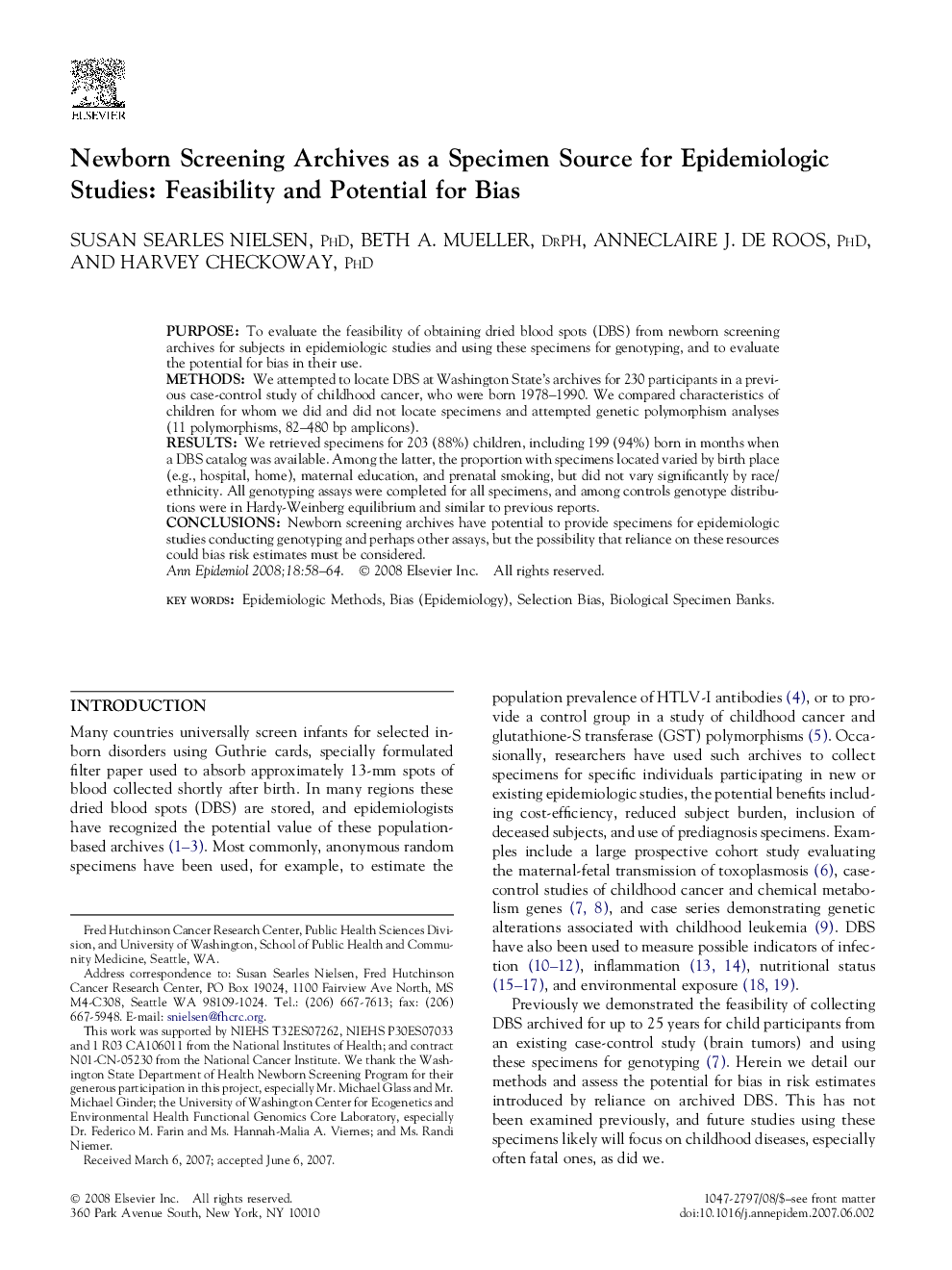| Article ID | Journal | Published Year | Pages | File Type |
|---|---|---|---|---|
| 3445687 | Annals of Epidemiology | 2008 | 7 Pages |
PurposeTo evaluate the feasibility of obtaining dried blood spots (DBS) from newborn screening archives for subjects in epidemiologic studies and using these specimens for genotyping, and to evaluate the potential for bias in their use.MethodsWe attempted to locate DBS at Washington State's archives for 230 participants in a previous case-control study of childhood cancer, who were born 1978–1990. We compared characteristics of children for whom we did and did not locate specimens and attempted genetic polymorphism analyses (11 polymorphisms, 82–480 bp amplicons).ResultsWe retrieved specimens for 203 (88%) children, including 199 (94%) born in months when a DBS catalog was available. Among the latter, the proportion with specimens located varied by birth place (e.g., hospital, home), maternal education, and prenatal smoking, but did not vary significantly by race/ethnicity. All genotyping assays were completed for all specimens, and among controls genotype distributions were in Hardy-Weinberg equilibrium and similar to previous reports.ConclusionsNewborn screening archives have potential to provide specimens for epidemiologic studies conducting genotyping and perhaps other assays, but the possibility that reliance on these resources could bias risk estimates must be considered.
